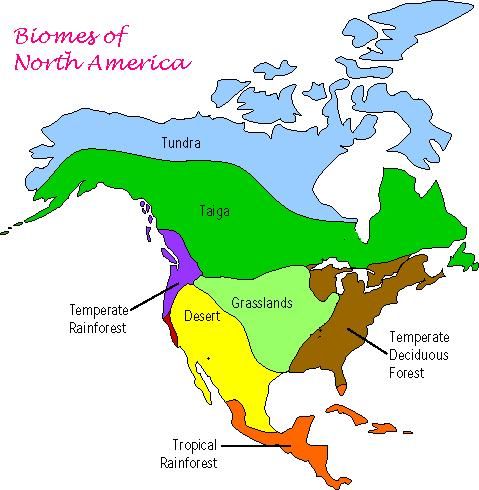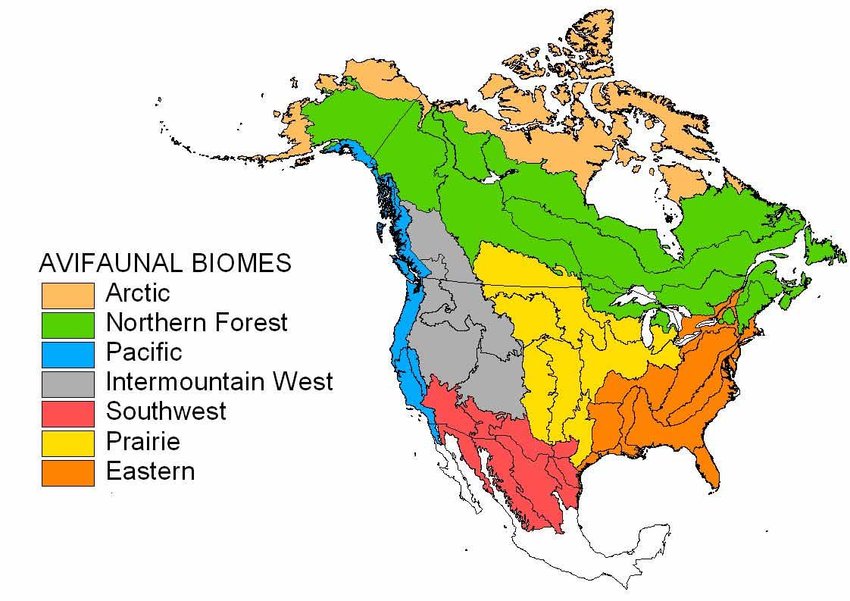Exploring the Largest Biome in North America
North America is home to a diverse range of natural habitats and biomes. Among them, there is one notable biome that stands out as the largest in the continent. In this article, we will delve into the fascinating world of North America's largest biome and explore its unique characteristics, biodiversity, and ecological importance.

Biomes of North America
1. Understanding Biomes:
1.1 Definition and Importance:
Before we dive into the specifics, let's establish a clear understanding of what biomes are and why they matter. Biomes are large-scale ecological communities characterized by distinct climatic conditions, vegetation types, and animal species. They play a crucial role in maintaining the balance of ecosystems and supporting various forms of life.
2. The Largest Biome in North America:
2.1 Introduction to the Taiga:
The largest biome in North America is the taiga, also known as the boreal forest.
It stretches across vast regions and exhibits remarkable biodiversity and environmental significance.
2.2 Geographic Distribution:
The taiga biome spans across the northern parts of North America, encompassing Canada and Alaska.
It extends further south in some areas, reaching parts of the United States, such as the Rocky Mountains and the Great Lakes region.
3. Climate and Physical Features:
3.1 Climatic Conditions:
The taiga biome experiences long, cold winters and short, cool summers. It is characterized by low average temperatures and a relatively low amount of precipitation, primarily in the form of snow.
3.2 Soil and Terrain:
The soil in the taiga is generally nutrient-poor and acidic due to slow decomposition rates caused by the cold climate. The landscape consists of vast coniferous forests, wetlands, lakes, and rivers.

Avifaunal biomes in North America
4. Biodiversity:
4.1 Plant Life:
The taiga biome is dominated by coniferous trees, such as spruce, fir, and pine. These evergreen trees are adapted to withstand the harsh winters and have needle-like leaves to conserve water.
4.2 Animal Life:
The taiga is home to a diverse array of animal species, including iconic mammals like moose, black bears, wolves, and lynxes. It also serves as a crucial habitat for migratory birds, such as warblers and waterfowl.
5. Ecological Importance:
5.1 Carbon Sink:
The taiga biome plays a vital role in regulating the global carbon cycle. Its vast forests act as significant carbon sinks, absorbing and storing large amounts of carbon dioxide, thus helping mitigate climate change.
5.2 Habitat and Migration Corridor:
The taiga provides critical habitat for numerous species, serving as breeding grounds, nesting sites, and feeding areas. It also acts as an essential migration corridor for birds and other animals, facilitating their seasonal movements.
6. Human Impacts and Conservation:
6.1 Resource Extraction:
Human activities, including logging, mining, and oil extraction, pose significant threats to the taiga biome. These activities can lead to habitat destruction, fragmentation, and loss of biodiversity.
6.2 Conservation Efforts:
To protect the taiga biome, various conservation organizations and government agencies work together to establish protected areas, promote sustainable forestry practices, and raise awareness about the ecological importance of this unique biome.
The taiga biome stands as the largest biome in North America, showcasing a stunning array of flora and fauna within its vast expanse. As we continue to navigate the challenges of environmental preservation, it is crucial to recognize the value of this unique ecosystem and strive for sustainable practices that ensure its long-term survival. By protecting and conserving the taiga, we contribute to the overall health and well-being of our planet.